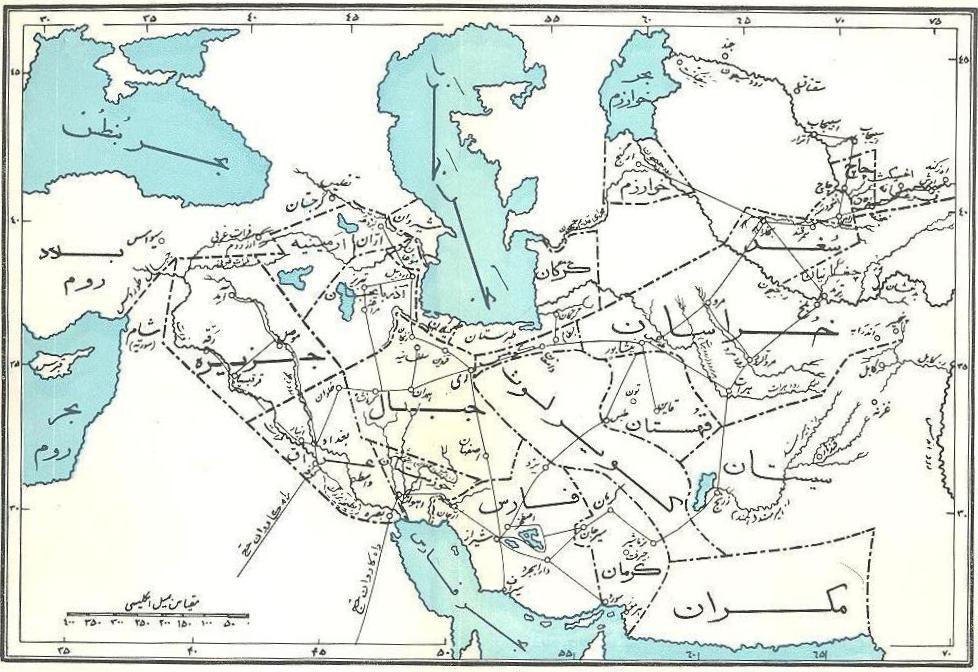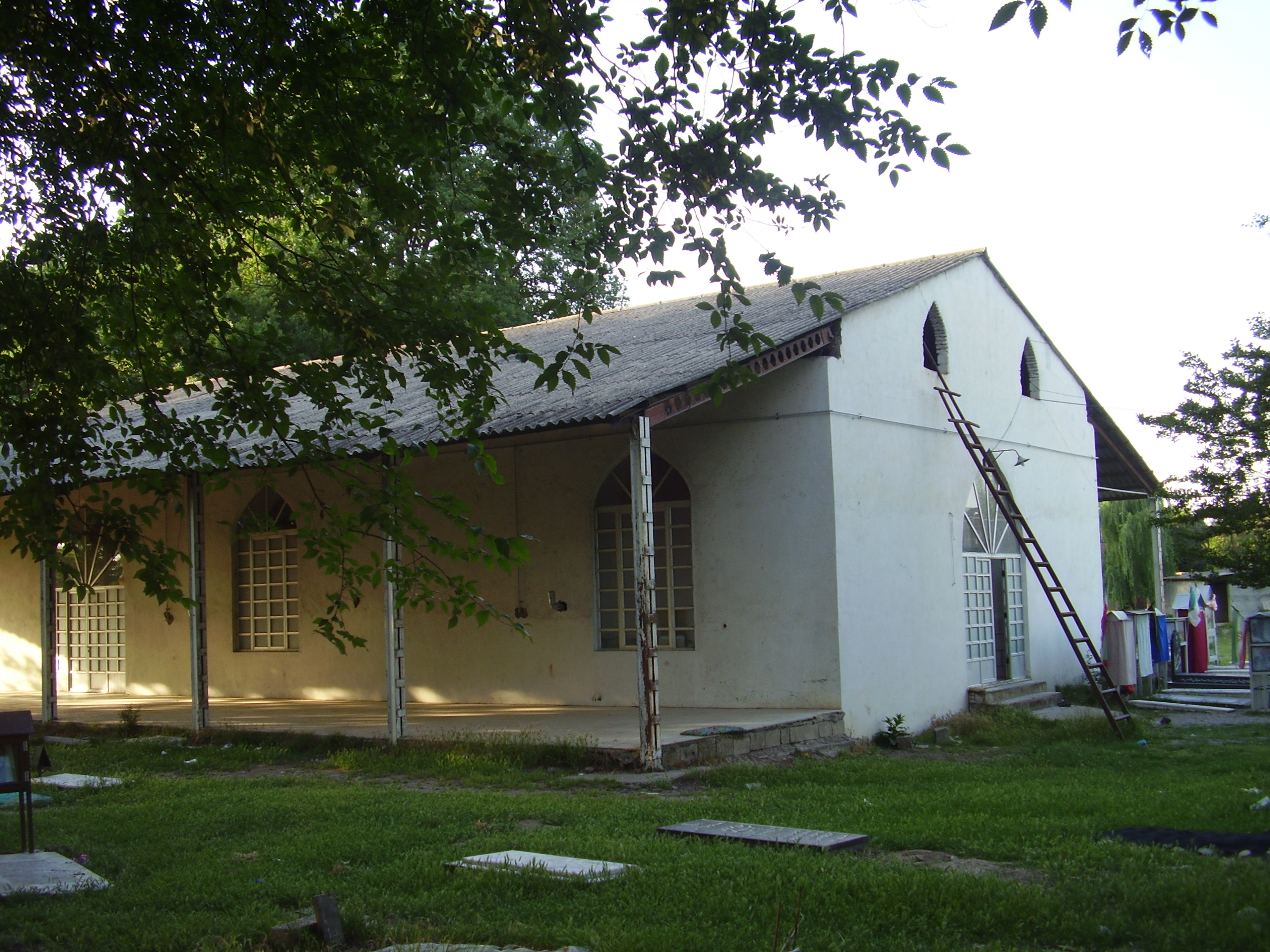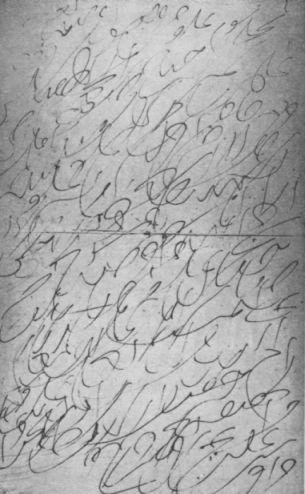|
MullГЎ Husayn
MullГЎ Husayn (1813 вҖ“ 2 February 1849) ( fa, Щ…Щ„Ш§ ШӯШіЩҠЩҶ ШЁШҙШұЩҲШҰЩҠ MullГЎh Hossein Boshru'i), also known by the honorific ''JinГЎb-i BГЎbu'l-BГЎb'' ("Gate of the Gate"), was a Persian religious figure in 19th century Persia and the first Letter of the Living of the BГЎbГӯ religion. He was the first person to profess belief in the BГЎb as the promised Mahdi of Islam and a Manifestation of God, founding a new independent religion. The title of BГЎbu'l-BГЎb was bestowed upon him by the BГЎb in recognition of his status as the first BГЎbГӯ. As a young man MullГЎ Husayn studied Usuli Shia theology, becoming an authorized member of the Shia clerical order at the age of 21. He later became a follower of the millenarian Shaykhi school, studying under its leader Siyyid Kazim Rashti and traveling to debate prominent Usuli clerics to gain support for Rashti's teachings. After Rashti's death, MullГЎ Husayn led a group of Shaykhis who traveled in search of the Mahdi. On 22 May ... [...More Info...] [...Related Items...] OR: [Wikipedia] [Google] [Baidu] |
Boshruyeh
Boshruyeh ( fa, ШЁШҙШұЩҲЩҠЩҮ - "''Bosh''-Growing", also Romanized as BoshrЕ«yeh) is a city in, and the capital of, Boshruyeh County, in western South Khorasan Province, Iran. At the 2006 census, its population was 13,778, in 3,638 families. Boshruyeh is located between the cities of Ferdows and Tabas at the border of the Dasht-e Kavir. Near this city, there are old villages named Aresk, Raqqeh, Korond, Neigenan and Ghaniabad. The geographic coordinates of Boshruyeh are 33В°52' N and 57В°25' E. The weather usually is warm and in summer it is very hot. The average rain in a year is less than 150 mm. History There are several historic buildings in Boshruyeh and its surroundings. Based on historical books, it seems that this city has been existed at least for 700 years. Some of the most famous buildings are: 1. ''Qal'eye Dokhtar'' "Young Woman's Castle": This citadel is located on the top of a mountain in the west of the city. It has been reported that this huge and ancie ... [...More Info...] [...Related Items...] OR: [Wikipedia] [Google] [Baidu] |
Shiraz
Shiraz (; fa, ШҙЫҢШұШ§ШІ, Е irГўz ) is the fifth-most-populous city of Iran and the capital of Fars Province, which has been historically known as Pars () and Persis. As of the 2016 national census, the population of the city was 1,565,572 people, and its built-up area with Sadra was home to almost 1,800,000 inhabitants. A census in 2021 showed an increase in the city's population to 1,995,500 people. Shiraz is located in southwestern Iran on the () seasonal river. Founded in the early Islamic period, the city has a moderate climate and has been a regional trade center for over a thousand years. The earliest reference to the city, as ''TiraziЕЎ'', is on Elamite clay tablets dated to 2000 BCE. The modern city was restored or founded by the Arab Umayyad Caliphate in 693 CE and grew prominent under the successive Iranian Saffarid and Buyid dynasties in the 9th and 10thвҖ“11th centuries, respectively. In the 13th century, Shiraz became a leading center of the arts and le ... [...More Info...] [...Related Items...] OR: [Wikipedia] [Google] [Baidu] |
Quran
The Quran (, ; Standard Arabic: , Quranic Arabic: , , 'the recitation'), also romanized Qur'an or Koran, is the central religious text of Islam, believed by Muslims to be a revelation from God. It is organized in 114 chapters (pl.: , sing.: ), which consist of verses (pl.: , sing.: , cons.: ). In addition to its religious significance, it is widely regarded as the finest work in Arabic literature, and has significantly influenced the Arabic language. Muslims believe that the Quran was orally revealed by God to the final prophet, Muhammad, through the archangel Gabriel incrementally over a period of some 23 years, beginning in the month of Ramadan, when Muhammad was 40; and concluding in 632, the year of his death. Muslims regard the Quran as Muhammad's most important miracle; a proof of his prophethood; and the culmination of a series of divine messages starting with those revealed to Adam, including the Torah, the Psalms and the Gospel. The word ''Quran'' occurs some ... [...More Info...] [...Related Items...] OR: [Wikipedia] [Google] [Baidu] |
Maktab (education)
A kuttab ( ar, ЩғЩҸШӘЩҺЩ‘Ш§ШЁ ''kuttДҒb'', plural: ''kataatiib'', ) or maktab ( ar, Щ…ЩҺЩғЩ’ШӘЩҺШЁ) is a type of elementary school in the Muslim world. Though the ''kuttab'' was primarily used for teaching children in reading, writing, grammar, and Islamic studies, such as memorizing and reciting the Qur'an (including ''Qira'at''), other practical and theoretical subjects were also often taught. The kuttДҒb represents an old-fashioned method of education in Muslim majority countries, in which a sheikh teaches a group of students who sit in front of him on the ground. Until the 20th century, when modern schools developed, kuttabs were the prevalent means of mass education in much of the Islamic world. Name Kuttab refers to only elementary schools in Arabic. This institution can also be called a ''maktab'' () or ''maktaba'' () in ArabicвҖ”with many transliterations. In common Modern Standard Arabic usage, ''maktab'' means "office" while ''maktabah'' means "library" or "(place of) ... [...More Info...] [...Related Items...] OR: [Wikipedia] [Google] [Baidu] |
Hajji
Hajji ( ar, Ш§Щ„ШӯШ¬Щ‘ЩҠ; sometimes spelled Hadji, Haji, Alhaji, Al-Hadj, Al-Haj or El-Hajj) is an honorific title which is given to a Muslim who has successfully completed the Hajj to Mecca. It is also often used to refer to an elder, since it can take years to accumulate the wealth to fund the travel (and did particularly before the advent of mass air travel), and in many Muslim societies to a respected man as an honorific title. The title is placed before a person's name; for example, Saif Gani becomes ''Hajji Saif Gani''. HadЕҫi is also used in Orthodox Christianity for people who go on pilgrimage to the grave of Christ in Jerusalem. It can then be added to the pilgrim's first name, e.g., HadЕҫi-Prodan, HadЕҫi-Дҗera, HadЕҫi-Ruvim, HadЕҫi-Melentije StevanoviДҮ Hajji is derived from the Arabic ', which is the active participle of the verb ' ("to make the pilgrimage"). The alternative form ' is derived from the name of the Hajj with the adjectival suffix -''Д«'', and th ... [...More Info...] [...Related Items...] OR: [Wikipedia] [Google] [Baidu] |
South Khorasan Province
South Khorasan Province ( fa, Ш§ШіШӘШ§ЩҶ Ш®ШұШ§ШіШ§ЩҶ Ш¬ЩҶЩҲШЁЫҢ ''OstДҒn-e KhorДҒsДҒn-e JonЕ«bД«'') is a province located in eastern Iran. Birjand is the centre of the province. The other major cities are Ferdows, Tabas and Qaen. In 2014, it was placed in Region 5. This new province, is but the old Quhistan which was included into greater Khorasan in the Iranian administrative planning. However, historically Qohistan forms a separate entity, with a distinct culture, history, environment and ecology. South Khorasan is one of the three provinces that were created after the division of Khorasan in 2004. While at the beginning, the newly created "South Khorasan" included only Birjand County and some new counties detached from that county (i.e. Nehbandan, Darmian and Sarbisheh), in subsequent years, all northern and western cities and territories of the old Quhistan (such as Qaen, Ferdows and Tabas) have been annexed into the South Khorasan. South Khorasan Province consi ... [...More Info...] [...Related Items...] OR: [Wikipedia] [Google] [Baidu] |
Islamic Eschatology
Islamic eschatology ( ar, Ш№Щ„Щ… ШўШ®Шұ Ш§Щ„ШІЩ…Ш§ЩҶ ЩҒЩҠ Ш§Щ„ШҘШіЩ„Ш§Щ…, ) is a field of study in Islam concerning future events that would happen in the end times. It is primarily based on hypothesis and speculations based on sources from the Quran and Sunnah. Aspects from this field of study includes the signs of the final age, the destruction of the universe and Judgement Day. The general consensus of Muslim scholars agree there would be tremendous and distinctive signs before the world ends. Among which would be an era of trials and tribulations, a time of immorality followed by mighty wars, worldwide unnatural phenomena and the return of justice to the world. Defining figures are also prophesied such as the Mahdi, and the Second Coming of Jesus who bring about a heavenly victory against the Antichrist ending with the release of Gog and Magog to the world. Once all the events are completed, the universe shall be destroyed and every human being would be resurrected ... [...More Info...] [...Related Items...] OR: [Wikipedia] [Google] [Baidu] |
Martyrdom In The BahГЎКјГӯ Faith
Martyrdom in the BahГЎКјГӯ Faith is the act of sacrificing one's life in the service of humanity and in the name of God. In ''Hidden Words'', BahГЎКјu'llГЎh's revelation incites believers towards martyrdom: "O son of being! Seek a martyr's death in My path, content with My pleasure ҖҰTo tinge thy hair with thy blood is greater in My sight than the creation of the universe and the light of both worlds. Strive then to attain this, O servant However, BahГЎКјu'llГЎh, the founder of the BahГЎКјГӯ Faith, discouraged the literal meaning of sacrificing one's life, and instead offered the explanation that martyrdom is devoting oneself to service for humanity. К»Abdu'l-BahГЎ, BahГЎКјu'llГЎh's son and appointed interpreter, explained that the truest form of martyrdom is a lifelong sacrifice to serve humanity in the name of God. While the BahГЎКјГӯ Faith exalts the station of its martyrs, martyrdom is not something that BahГЎКјГӯs are encouraged to pursue; instead one is urged to value and prote ... [...More Info...] [...Related Items...] OR: [Wikipedia] [Google] [Baidu] |
Battle Of Fort Tabarsi
Shaykh ṬabarsГӯ, or more correctly the Shrine of Shaykh TabarsГӯ, was the location of a battle between the forces of the Shah of Persia and the BГЎbГӯs over a period of seven months: October 10, 1848 to May 10, 1849. The commanding prince in charge of the government troops, unable to force the surrender of the followers of the BГЎb, resorted to a plan of betrayal to capture the remaining BГЎbГӯs. The shrine is located in Mazandaran Province, Iran. Leading up to the Battle MullГЎ Husayn-i-Bushru'i, one of the most prominent BГЎbГӯs and the very first person to accept the new faith, marched with 202 of his fellow disciples, under instructions from the BГЎb, from Mashhad to the Shrine of Shaykh TabarsГӯ with the Black Standard raised, fulfilling an Islamic prophecy. The mission was most likely proclamatory but possibly also to rescue another BГЎbГӯ leader, QuddГәs, who was under house arrest in SГЎrГӯ. After being attacked at the town of Barfurush (home of QuddГәs), the grou ... [...More Info...] [...Related Items...] OR: [Wikipedia] [Google] [Baidu] |
BahГЎКјГӯ Literature
BahГЎКјГӯ literature covers a variety of topics and forms, including scripture and inspiration, interpretation, history and biography, introduction and study materials, and apologia. Sometimes considerable overlap between these forms can be observed in a particular text. The "canonical texts" are the writings of the BГЎb, BahГЎКјu'llГЎh, К»Abdu'l-BahГЎ, Shoghi Effendi and the Universal House of Justice, and the authenticated talks of К»Abdu'l-BahГЎ. The writings of the BГЎb and BahГЎКјu'llГЎh are regarded as divine revelation, the writings and talks of К»Abdu'l-BahГЎ and the writings of Shoghi Effendi as authoritative interpretation, and those of the Universal House of Justice as authoritative legislation and elucidation. Some measure of divine guidance is assumed for all of these texts. The BahГЎКјГӯ Faith relies extensively on its literature. Literacy is strongly encouraged so that believers may read the texts for themselves. In addition, doctrinal questions are routinely ... [...More Info...] [...Related Items...] OR: [Wikipedia] [Google] [Baidu] |
Mohammad Shah Qajar
Mohammad Shah (; born Mohammad Mirza; 5 January 1808 вҖ“ 5 September 1848) was the third Qajar ''shah'' of Iran from 1834 to 1848, having succeeded his grandfather Fath-Ali Shah. From a young age, Mohammad Mirza was under the tutelage of Haji Mirza Aqasi, a local dervish from Tabriz whose teachings influenced the young prince to become a Sufi-king later in his life. After his father Abbas Mirza died in 1833, Mohammad Mirza became the Crown Prince of Iran and was conferred the title of Governor of Azarbaijan. Not long after, Fath-Ali Shah died on his way to Shiraz, leading some of his sonsвҖ”including Ali Shah Mirza and Hossein Ali MirzaвҖ”to revolt but Mohammad Shah, with the support of his grand vizier, Abol-Qasem Qa'em-Maqam, suppressed the rebellions and asserted his authority. Mohammad Shah ordered the removal, imprisonment and eventual execution of Qa'em-Maqam, which led to appointment of Aqasi as the grand vizier. One of Mohammad Shah's main goals was to reconquer t ... [...More Info...] [...Related Items...] OR: [Wikipedia] [Google] [Baidu] |






